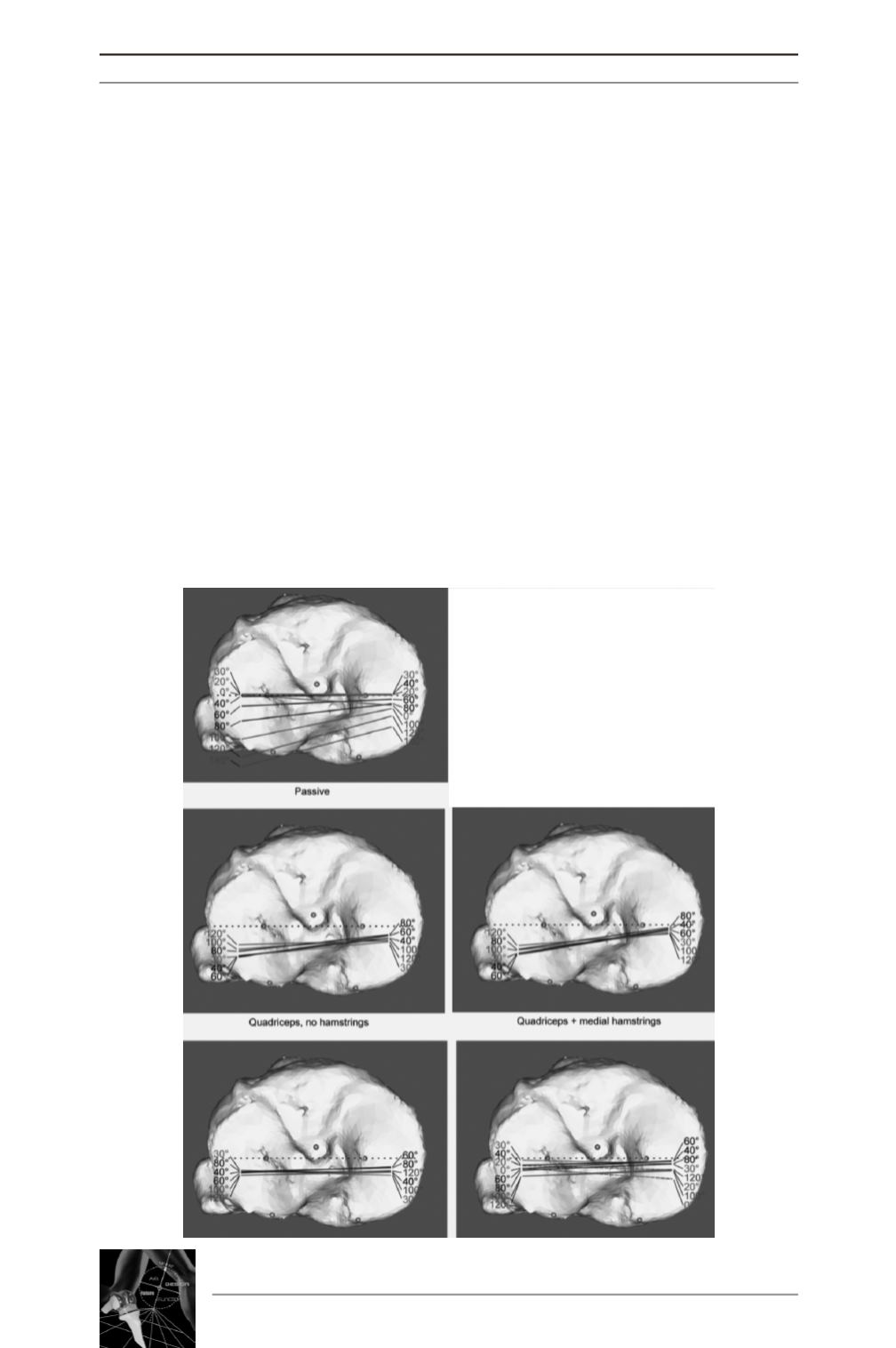

DOES THE NATIVE KNEE
HAVE A SINGLE
COMPULSIVE KINEMATIC
PATTERN?
Thanks to the extensive work by Freemans
group [15-17], the kinematics of the normal
knee joint were exposed in detail to the ortho-
paedic community. The downside of the intui-
tive graphical presentation of the data is the
perception that the native knee has only one
possible compulsive pattern of motion. This
pattern describes more posterior translation of
the lateral condyle as compared to the medial
condyle, leading to internal rotation of the tibia
with increasing flexion (fig. 1b). The unders-
tanding of the knee being capable of dis-
playing different motion patterns is far less
widespread amongst orthopaedic surgeons.
However, in their original publication Hill et al
already stated “External rotation of the tibia sup-
pressed the internal rotation… Consequently,
the knee flexed as would a hinge, without axial
rotation” [15], hereby indicating that the classic
kinematic pattern is optional and under the
influence of external constraints, body forces
and muscle loads. All these extrinsic variables
can steer the knee into a different kinematic pat-
tern. We recently studied the kinematic patterns
of the native knee as they were influenced by
differential muscle loads from medial and lateral
hamstrings and quadriceps during a loaded full
squat [20]. The conclusions of this study are
summarized in figure 4. As quadriceps muscle
load on the experimental model was applied, the
posterior translation of the femur on the tibia
was decreased. Loading the biceps tendon fur-
ther decreased the rotational pattern, almost allo-
wing the knee “to flex as would a hinge”.
14
es
JOURNÉES LYONNAISES DE CHIRURGIE DU GENOU
168
Fig. 4 : Kinematic patterns of the
knee in passive condition (top
image), followed by loading of the
quadriceps only, quadriceps
+ medial hamstrings and quadri-
ceps + lateral hamstrings. The
bottom right picture represents
the kinematic pattern of the expe-
rimental model loaded with qua-
driceps and both hamstrings [20].











